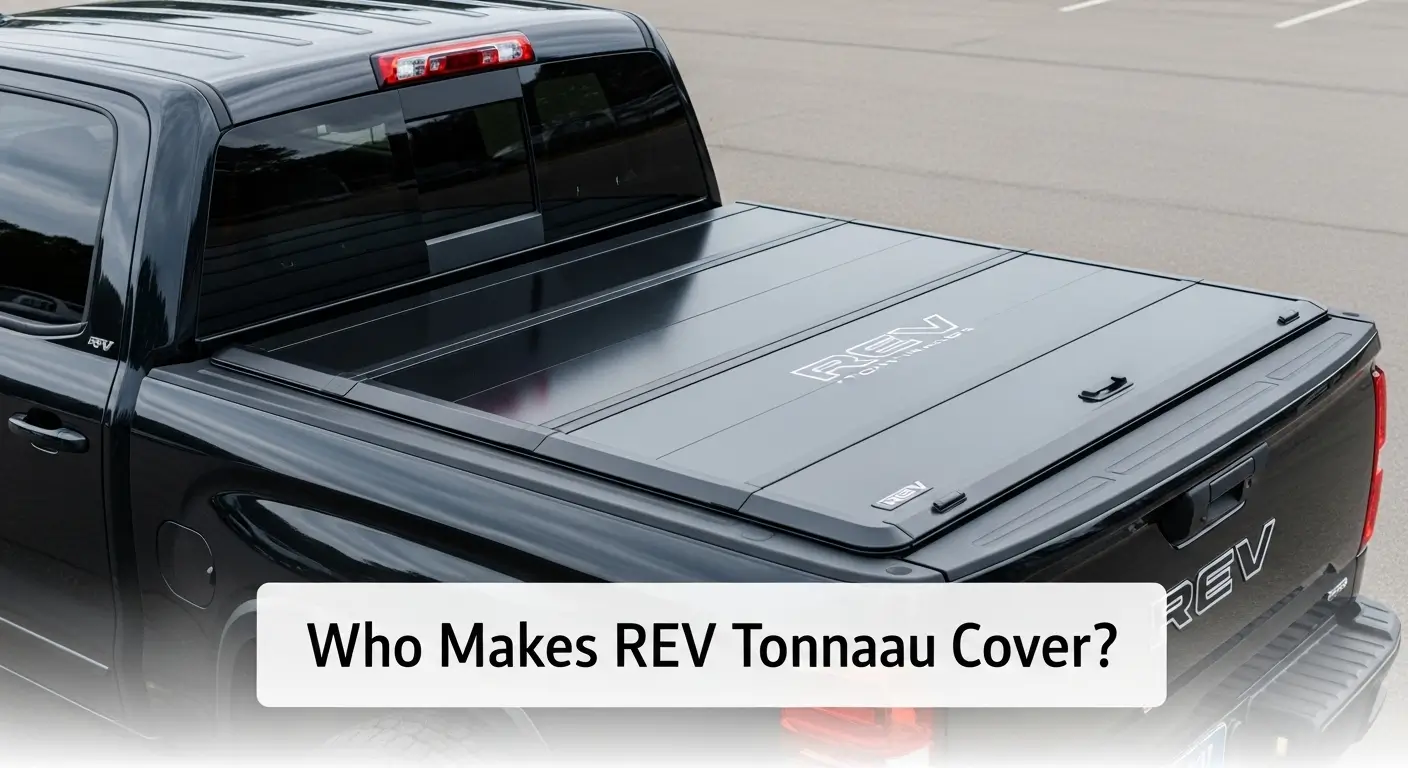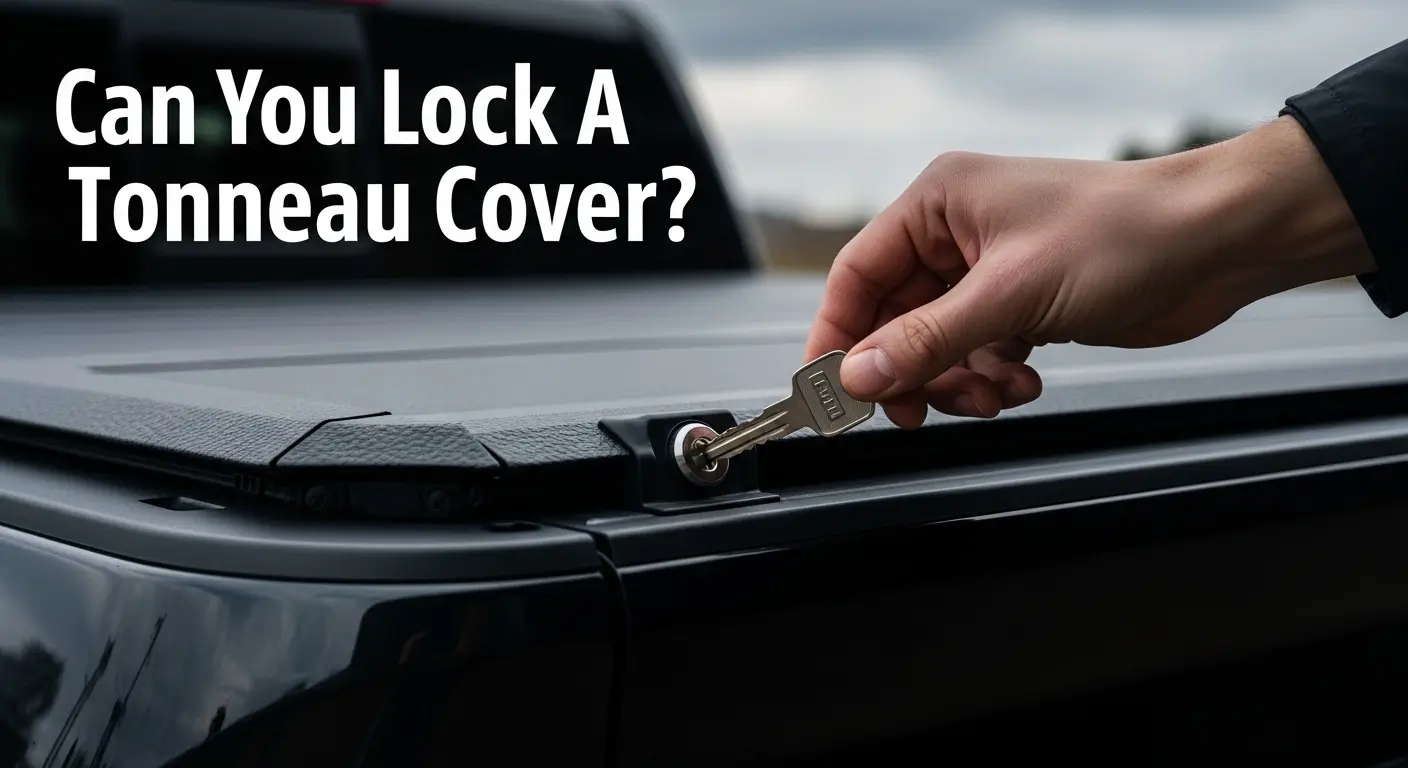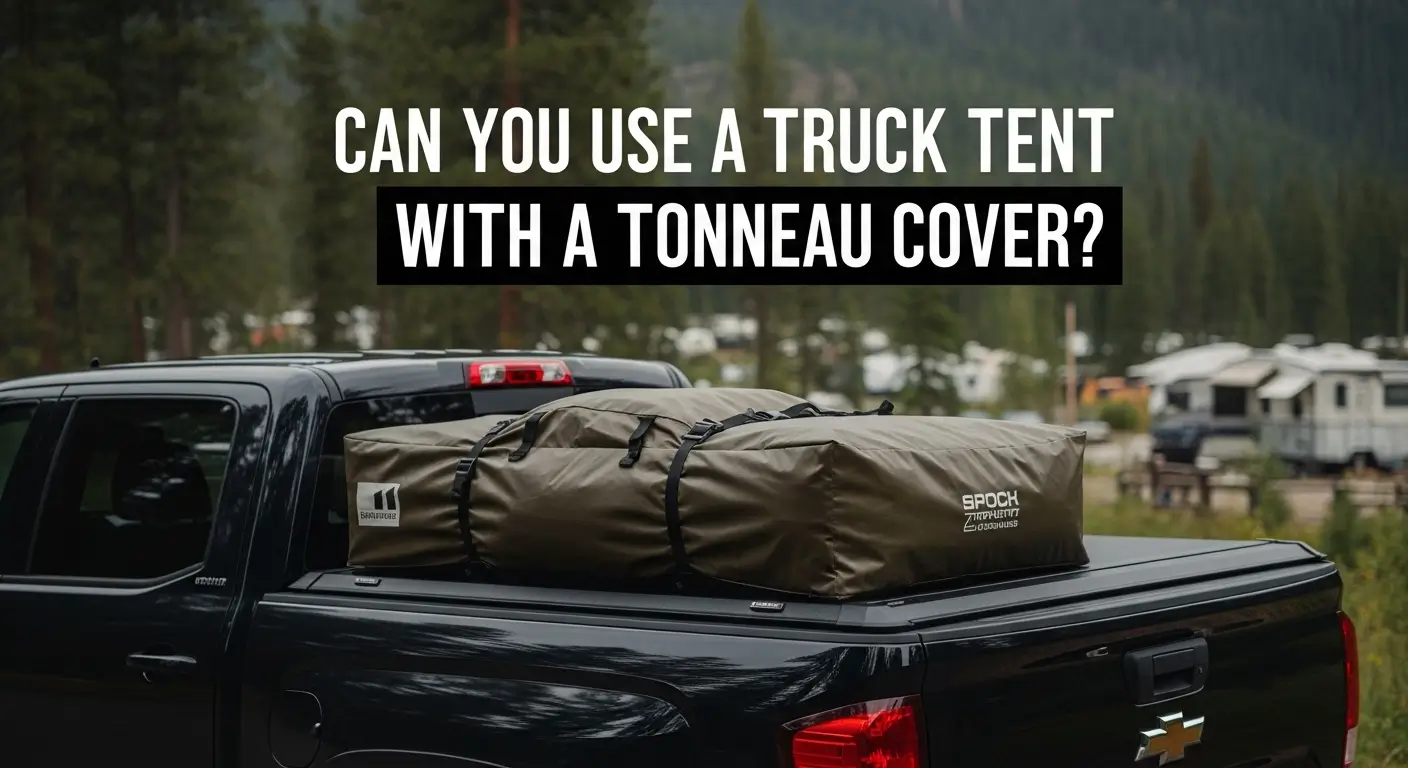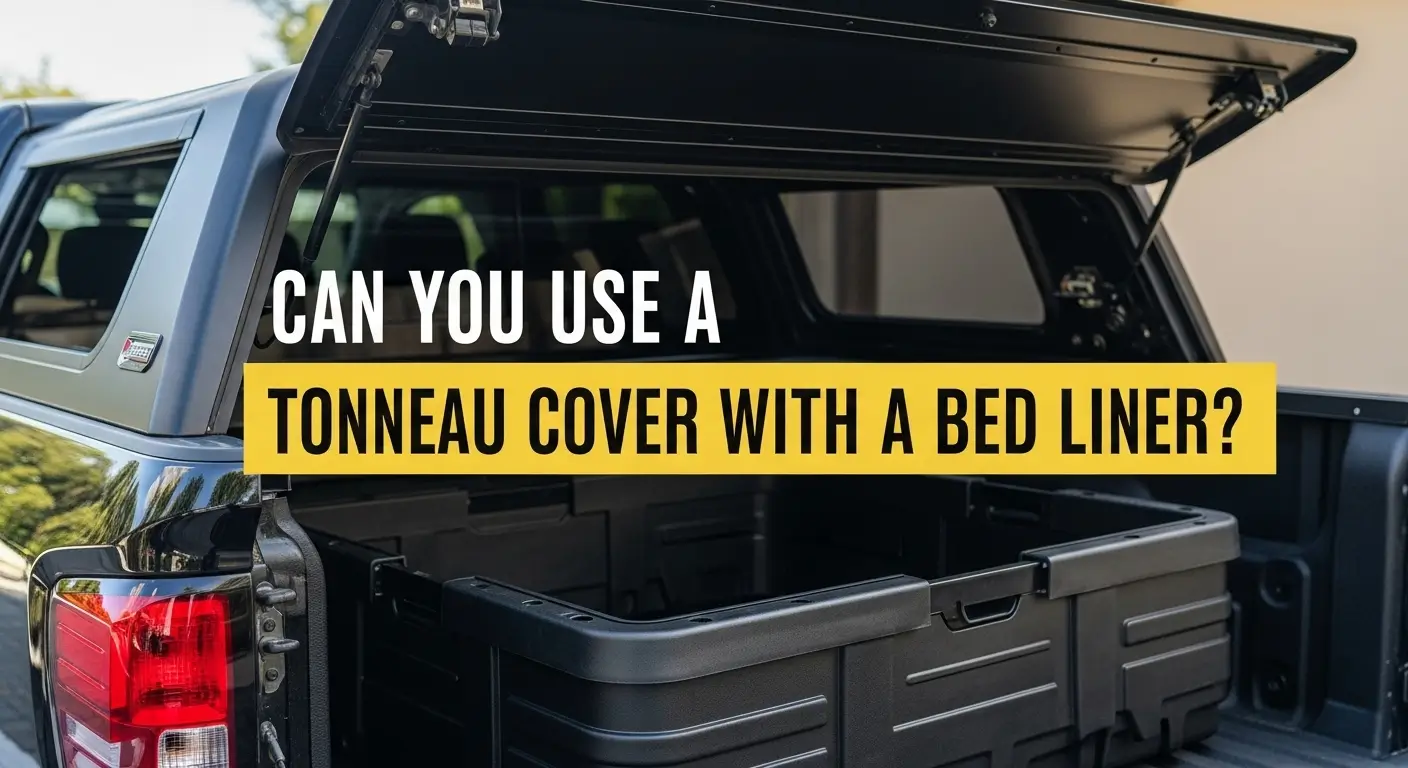Truck owners often wonder if covering the empty bed of a pickup can cut down fuel costs. The simple answer is yes, but only modestly. A tonneau cover smooths airflow over the bed, reducing aerodynamic drag.
In practice this can give a small boost to miles-per-gallon on the highway – but don’t expect dramatic improvements.
In this deep dive, we’ll break down how covers affect fuel economy, summarize tests and studies, and explain exactly when you might see gas savings (and when you won’t).
By the end, you’ll understand how much a cover can help your MPG, plus the other benefits of covering your cargo.
Also check- How tonneau covers affect MPG
Table of Contents
Summary and Key Takeaways
- Tonneau covers do improve aerodynamics by reducing the drag caused by an open truck bed. In controlled tests, covers cut drag by roughly 5–12% on average, which should yield modest MPG improvements.
- Expected MPG gains are small. In real-world highway driving, anticipate on the order of +0.2 to +1 MPG (roughly 1–5% better fuel economy). In city driving, the effect is usually negligible. Results vary with truck model, speed, and cover type.
- Cover design matters. Low-profile, flush-fitting covers (especially lightweight soft covers) tend to maximize efficiency. Heavy, bulky covers can offset gains with extra weight. Keeping the tailgate closed is key.
- Additional benefits: Beyond any fuel savings, tonneau covers protect cargo from theft and weather, and keep your bed cleaner. Many buyers choose covers primarily for these perks.
- Cost vs. savings: Don’t buy a cover expecting quick payback from gas savings. Instead, think of fuel savings as an extra bonus. The main decision factors should be cargo security, convenience, and personal preference, with fuel economy as one of many benefits.
Before we drive in the study keep in mind that there are several tonneau covers companies claimed that can improve gas mileage. Tyger claimed several times that their Tonneau Covers (check them on Amazon) improve up to 13% gas mileage. Also TruXedo Truck Bed Tonneau Cover claimed 10% gas savings.
How Aerodynamics and Drag Reduction Affect Fuel Economy
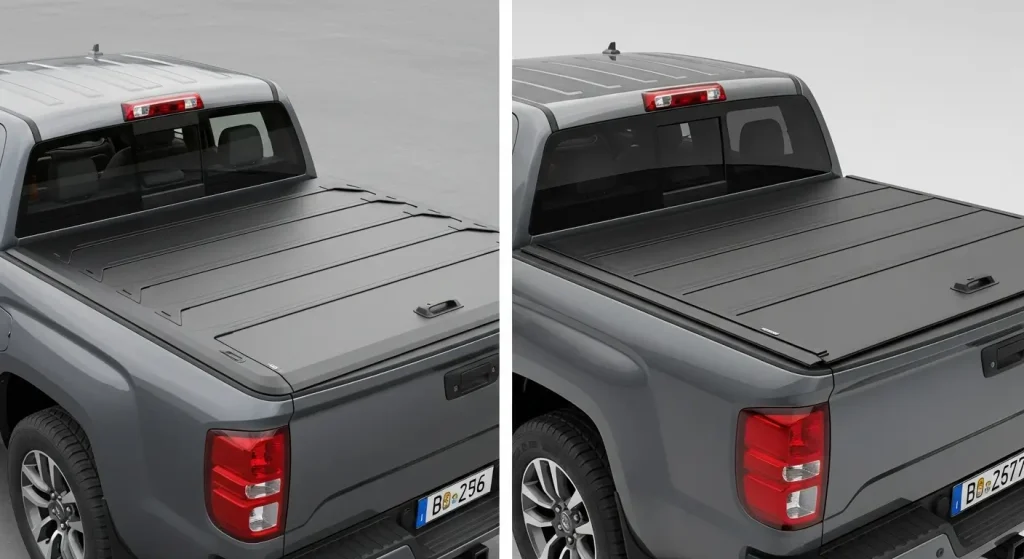
When a pickup truck cruises with its bed open, swirling air behind the cab and inside the empty bed acts like a little “air parachute,” creating extra drag.
A tonneau cover effectively caps the bed, letting air flow smoothly off the back of the truck instead of churning around inside.
The image above illustrates this: the blue arrows show smooth airflow over a covered bed, while the red arrows show how open air is trapped without a cover.
By streamlining the airflow, covers cut drag. Lower drag means the engine doesn’t have to work as hard to push air out of the way at speed, so fuel consumption drops slightly.
Fundamental physics suggests any truck bed cover that reduces drag should help fuel economy to some degree.
Wind-tunnel tests and engineering studies have confirmed that most tonneau covers do reduce the aerodynamic drag coefficient by a few percent.
In numbers, lab tests have found typical drag reductions on the order of 5–12% when a cover is installed.
That translates into a fuel economy bump on the order of a couple percent (a 5% drag drop might equal roughly a 2% MPG gain under steady highway driving).
In other words, tonneau covers can improve efficiency, especially at highway speeds where aerodynamics dominate, but the gains are often measured in single-digit percentages.
What the Studies and Tests Say About MPG?
Over the years a handful of experiments have tried to quantify the real-world MPG impact of tonneau covers, often with conflicting results:
Water and wind tunnel studies
Engineering students and industry groups have repeatedly shown drag reduction with covers. A classic 1997 college project found a particular hard tonneau cover cut drag by ~12%. A 2007 SEMA (Specialty Equipment Manufacturers Association) wind-tunnel study on several truck models concluded an average drag reduction around 5–6% with a cover.
These controlled tests imply a few-percent MPG gain, since less drag at speed means slightly less fuel needed to maintain highway pace.
MythBusters TV test
In 2006 the show MythBusters put a pickup on the road at 25 and 55 mph to measure real fuel use with and without a cover. They found almost no difference in fuel consumption between an open-bed truck and one with a cover.
(Interestingly, they noted an open tailgate was least efficient and a mesh tailgate was slightly better than a solid one.) Their verdict was that any MPG effect was negligible in their single-truck test.
Modern road tests
More recent DIY and industry tests paint a nuanced picture. One pickup truck test (Ram 1500 Classic, 2022) recorded 21.14 MPG with a cover vs 19.53 MPG without, a 7.7% jump in fuel economy (about +1.6 MPG) on a highway loop.
Other drivers report smaller gains (e.g. +0.5–1 MPG) or hardly any change, often depending on conditions and cover type.
Even electric truck range: Similar principles apply to EV trucks – some range tests have shown a measurable range bump with the bed covered, since drag reduction benefits apply regardless of powertrain. This underscores that covers can improve efficiency, even if by a slim margin.
In summary, real-world results vary. Closed-circuit tests confirm covers reduce drag by a few percent, and that should help MPG. In practice, some tests see gains of 1–2 MPG on the highway, while others find almost no change.
Differences come down to speed, truck model, cover design, and test method. The consensus is that covers do save fuel in principle, but the benefit is subtle and highly case-dependent.
How Much Fuel Will You Save? Real-World Scenarios
So what does a few-percent MPG improvement mean for you? It depends on how and where you drive:
Highway driving: Aerodynamic drag dominates at higher speeds. Many analyses suggest that at 65–75 mph, a cover can improve MPG by a few tenths to up to about 1 MPG.
For example, if your truck normally gets 18 MPG at 75 mph, a 6% reduction in drag might boost it to roughly 19–19.2 MPG. That’s maybe 1 MPG extra (as a ballpark). In one test at 85 mph, a tonneau cover cut engine workload enough to gain about +1.1 MPG.
City or slow driving: Below ~55 mph, aerodynamic drag isn’t the main factor (rolling resistance and drivetrain losses dominate). Here, a cover’s impact on fuel use is negligible – often a few hundredths of an MPG at best. You won’t notice it in normal city commuting.
Tailgate position: An open tailgate might let some air escape, but tests (including Ford’s wind tunnel experiments) have shown an open tailgate doesn’t significantly improve fuel economy – it often hurts it.
Keeping the tailgate closed with or without a cover is generally best for aerodynamics. A cover with the tailgate up provides a smoother profile than an open bed.
Cover weight vs benefit: Most modern covers are relatively light. A soft tri-fold or roll-up cover might weigh 20–30 lbs, while a heavy retractable or fiberglass hard cover could weigh 50–100 lbs or more.
The extra weight has a small negative effect on MPG (for every 100 lbs you carry, fuel use goes up slightly). In practice, the weight of a typical cover is minor compared to the drag reduction benefit at highway speeds – unless you choose an extremely heavy cover.
That’s why many fuel-economy experts recommend light to medium-weight covers (soft folding or roll-up types) if maximizing MPG is the goal.
Fuel cost savings: Suppose you drive 15,000 highway miles a year at 25 MPG without a cover (600 gallons, ~$1,800 at $3/gal). A 2% efficiency gain (25.5 MPG) would save about 12 gallons/year (about $36). A 5% gain (~26.25 MPG) saves ~28 gallons ($84).
In other words, even a few-percent MPG boost equates to only tens of dollars a year. The material and installation cost of a cover (often $500–$1,000 or more) likely won’t be recouped by fuel savings alone for many years.
Key takeaway: If you do a lot of steady highway driving, expect maybe a few tenths to 1 MPG improvement. If you mostly drive in town, expect virtually no fuel savings.
Every truck and situation is different, but a safe estimate is a cover might net on the order of 1–5% better fuel economy under favorable conditions. That means if you average 20 MPG, a good cover could add roughly 0.2–1 MPG when cruising above 60 mph.
Types of Tonneau Covers: Which Save the Most Gas?
Not all covers are created equal when it comes to efficiency. Here’s how cover design can influence the outcome:
Soft vs hard covers
Soft (vinyl/fabric) covers are lightweight, usually inexpensive, and easy to remove. However, because they lie on rails and can flutter in the wind, some say they don’t streamline as cleanly as hard covers.
Hard covers (fiberglass or aluminum) provide a rigid, smooth top that air glides over. On the other hand, hard covers are heavier – that weight can offset some aerodynamic benefit.
In controlled tests, a flush-mounted hard cover often showed slightly better drag reduction than a loose-fitting soft cover. But because soft covers weigh less, they often achieve nearly the same net MPG gain (or even better in cases where weight matters).
Flat versus raised designs
Covers that sit very close to the truck bed (flush or low-profile) force air to skim along a mostly flat top. Covers that are higher or curved can catch more air. For example, standard-fitted tri-fold or roll-up covers create a smoother surface over the entire bed.
Some aftermarket hardcovers that sit above the bed sides (for extra capacity) may not seal as tightly, causing turbulence underneath. Look for covers that form a tight seal and follow the bed’s contour for best aerodynamics.
Retractable vs folding
Retractable metal covers can work well but tend to be the heaviest. Soft roll-up or tri-fold covers are very light but sometimes create slight billowing in the wind. Folding hard covers give rigidity but add weight.
In practice, many experts recommend a soft tri-fold or roll-up cover if MPG is a priority, because they add minimal weight and still cover the bed.
For example, a soft roll-up might weigh <30 lbs, whereas a comparable hard folding cover might be 60–70 lbs. In any case, avoid extremely heavy models if fuel savings are a concern.
Tailgate seal
Some premium covers have seals that attach to the tailgate or sides, creating a nearly airtight bed compartment. Others just lay loosely.
A tight seal helps keep the space behind the cab calm. Covers with built-in seals or a “snap-down” tailgate seal can trap even less air in the bed. This detail is subtle but can make a small difference at highway speeds.
Remember: even the best tonneau cover won’t turn a truck into a Prius. The cover’s design makes a difference, but any cover that significantly reduces the “air pocket” in the bed will offer some improvement.
If choosing a cover with fuel efficiency in mind, prioritize low weight and a smooth aerodynamic profile. Many drivers opt for top-selling soft folding covers or low-profile hard covers known for aerodynamics.
Other Factors: Tailgates, Cargo & Weather
A few practical factors can influence whether you see a benefit from a tonneau cover:
Tailgate position: Always keep it closed when driving. With the cover on and tailgate up, the airflow path is most streamlined.
Some tests found that even with a cover, an open tailgate actually increased drag. The safest bet: keep the tailgate up and covered.
Cargo or bed liners
A heavy load in the bed can overwhelm any subtle drag advantage, since you’re carrying extra weight anyway. Conversely, if your bed is empty most of the time, the cover’s impact is more noticeable.
Also, a smooth bed liner (spray-on type) helps airflow, whereas an open ribbed bed might trap more air. But the cover’s effect overshadows these details at speed.
Weather impacts
In winter or wet climates, a tonneau cover keeps snow and water out of the bed. An empty bed full of heavy wet snow would definitely reduce MPG (it adds weight); preventing that by using a cover can indirectly save fuel.
In summer, some say an open bed dumps heat better, but this has negligible effect on fuel economy. The big weather-related gain is simply not carrying extra weight (rain, snow, debris) every day.
Maintenance and security
Beyond fuel, covers lock up your cargo and keep it clean. These practical benefits often outweigh the MPG question. For many buyers, the fuel savings are a bonus, not the primary reason.
Common Myths vs. Reality
Myth: “A tonneau cover will pay for itself in gas savings.”
Reality: Unlikely. Payback calculations usually show it would take many years of highway driving to break even on cost from fuel savings alone. Covers are generally worth it for cargo protection and style, with gas savings as a nice side-effect.
Myth: “All tonneau covers save the same amount of gas.”
Reality: No. As covered above, cover type and weight matter. A heavy retractable cover may save less (or even cost you fuel) compared to a light tri-fold cover.
Myth: “Open tailgate is better for gas than a closed one.”
Reality: That idea was debunked by multiple tests. An open tailgate can actually create more turbulence. For best MPG with a cover, keep the tailgate up.
Myth: “I can dramatically boost MPG by covering my truck.”
Reality: The best case on highways might be a few percent gain. That’s good for fuel economy, but not revolutionary. Think of it as a minor optimization, not a major upgrade.
Is a Tonneau Cover Right for You?
If your main goal is fuel economy, consider your driving habits:
Highway commuters: Covering the bed is most beneficial for long highway trips. If you drive hundreds of miles on the freeway regularly, the slight MPG boost adds up over time. You’ll recoup some gas money (slowly) and enjoy a more streamlined truck.
City drivers or low-mileage users: If most driving is in stop-and-go traffic, a cover won’t improve MPG by any noticeable amount. But it still secures cargo and protects the bed from rain/snow.
Rural or snowy climates: Covers keep snow and water out of the bed. An empty bed is lighter than one full of snow or water, so covering the bed can indirectly help fuel use in winter by not carrying that extra weight.
Electric truck owners: Range anxiety is real, and any drag reduction helps. EV truck drivers might consider a cover to squeeze out a bit more range on highway trips.
If you decide to get one, choose wisely. For fuel savings, a lightweight cover that sits flush (like a soft tri-fold or roll-up) is often the best pick. Also, make sure it fits well and seals properly. Proper installation and regular checks (tightening clamps, etc.) ensure it performs as intended.
In conclusion, a tonneau cover can slightly save gas, but only under the right conditions. If you drive a lot of highway miles, a good cover will help slice a bit off your fuel bill over time.
It won’t magically double your MPG or anything – that’s a myth. But if you need a cover anyway for security or style, consider one with aerodynamic design.
And if you’re curious, monitor your own MPG before and after adding a cover; you might be surprised at what you find. Happy trails (and fuel savings) to you!


